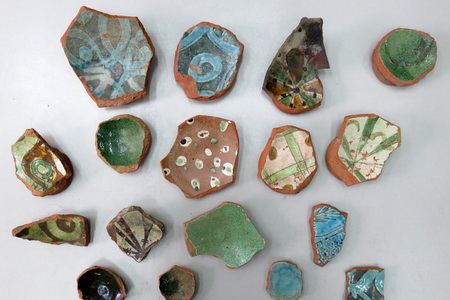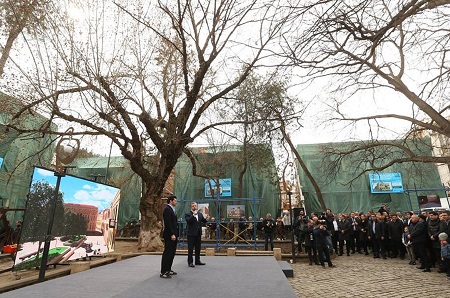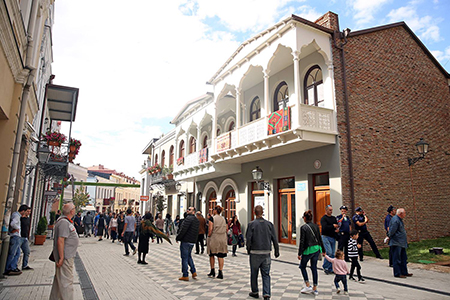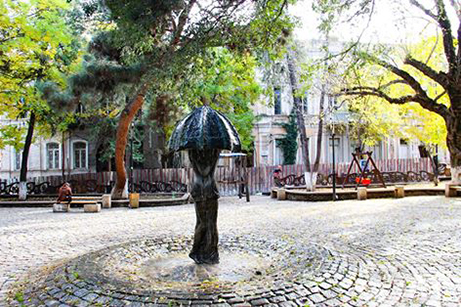Tbilisi’s historic Gudiashvili Square surprises historians with new archaeological discovery

Historians of Georgia’s capital Tbilisi have fresh archaeological material to work with after development works on the historic Gudiashvili Square turned up artifacts and artwork last week.
Decorated pieces of ceramic cutlery, a compartment for clay oven and other discoveries were made during works on the Old Town district of the city.
Preliminary estimates by historians have dated the items back to the 16th-17th centuries.

A sculpted face on one of the unearthed vessels became the central part of the finding. Photo: Tbilisi Development Fund.
Among intact vessels and pieces of household items unveiled by the digs was a painting on moulded piece of a bowl, with its photograph quickly going viral on social media.
Residents of the capital and of houses on and around Gudiashvili reacted to the findings that were announced by the Tbilisi Development Fund.
Their development work on the square is carried out with supervision of archaeologists the National Agency for Cultural Heritage Preservation of Georgia.
The effort on "rehabilitating” the long-neglected square with historic buildings and streets falls within the government’s large-scale New Tiflis project.

One of the artifacts extracted during the digs. Photo: Tbilisi Development Fund.
Launched in 2016, the initiative aims to restore and renovate parts of the Old Town districts of the city that are envisioned to become part of a restored historical tourist route through the capital.
See a promotional video showcasing the square and its proposed renovation.
Gudiashvili Square features nine buildings classified as monuments of cultural heritage by authorities.
Representing one of Tbilisi's iconic historical sites, the square was given different names in various eras. It has been known with its current name — after celebrated 20th Century Georgian painter Lado Gudiashvili — since 1988.

A close-up on decorated pieces of clay items. Photo: Tbilisi Development Fund.
Initial plans for the square date back to Medieval times. The earliest of the present buildings that surround the square from a number of converging streets were built in the second half of the 19th Century.
Houses on the square represent the capital's cultural history — they include a building that served as Imperial Russia's headquarters for Caucasia in the 19th century. The house later served as editorial offices of the popular literary newspaper Literaturuli Sakartvelo, established in 1931.
As a result of neglect of the buildings through the political and economic turmoil and hardship in Georgia through the 1990s and later, the square found itself in precarious state.
With houses of historic importance on brink of collapse, the square became a battleground for social activists and citizen-led movements campaigning for its preservation throughout the last decade.
Georgia’s government revealed its plans for preserving, restoring and renovating the area in March this year. Tweet
Tweet  Share
Share





